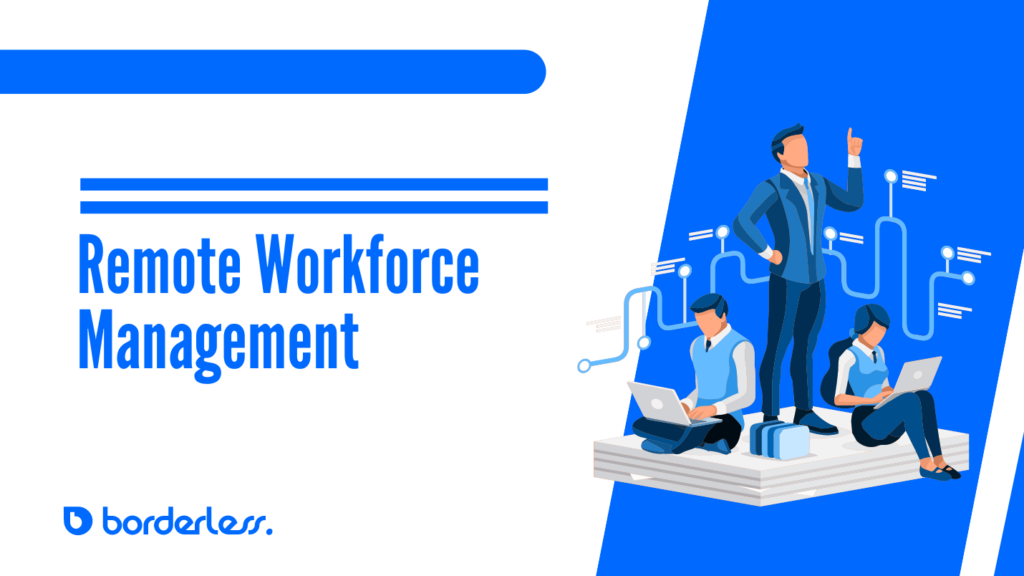Remote work has become increasingly popular in recent years, fueled by advancements in technology that enable employees to work from anywhere in the world. However, while remote work offers many benefits, managing a remote workforce presents unique challenges for employers. In this article, we will explore the challenges and solutions associated with remote workforce management. We will discuss the benefits of a remote working environment, offer strategies for managing virtual teams, and provide tips for staying connected with remote staff. With the right tools and strategies, businesses can create an effective and efficient remote workplace for their employees, which is especially important in today’s rapidly changing workplace.
As technology continues to advance, remote workforce management offers businesses the flexibility they need to accommodate their employees’ varied work needs and help them thrive in today’s modern world. With the right tools and strategies, employers can easily manage remote teams, streamline processes and increase productivity. By leveraging technology to its fullest potential, organizations can create a more effective and efficient remote workforce that will help to drive success in the long run.
Challenges of Remote Workforce Management
The benefits of remote work are undeniable. With the rise of technology, it has become easier than ever to work remotely. Gone are the days when employees had to travel to their offices or be physically present at their desks to get work done. With remote work, employees can be located anywhere in the world, which has made working from home a viable option for many employees. As with many new and exciting concepts, there are some challenges that come with them. First, let’s talk about the challenges of remote workforce management.
Communication
Effective communication is a critical component of successful remote work. However, remote teams may face several communication barriers that can hinder collaboration and productivity. Language differences, time zone disparities, and the lack of face-to-face interactions can lead to miscommunication, misunderstandings, and reduced productivity. One of the significant challenges of remote workforce management is the risk of communication issues. While employees may be able to communicate remotely, it is not the same as communicating face-to-face. This can result in slower communication, which may cause delays in projects and deadlines. Moreover, the remote nature of communication also increases the possibility of miscommunication, which can further impact productivity and team cohesion. Therefore, it is crucial for organizations to have effective communication tools, clear communication protocols, and provide opportunities for regular check-ins and feedback to ensure that communication is streamlined, effective, and efficient.
Accountability
Without a physical presence in the office, it can be challenging for employers to ensure that remote employees are working efficiently and meeting their goals. Remote workers may face distractions and isolation, which can impact their performance. Distractions can come from family, friends, pets, or the environment. To reduce distractions, remote workers should create a dedicated workspace free from interruptions and set boundaries with family and friends. It can be challenging to monitor employee productivity and ensure that they are meeting their targets and deadlines. In a remote work environment, employees may have more autonomy and less direct supervision, which can lead to accountability issues. Additionally, communication barriers and a lack of face-to-face interactions can make it difficult for managers to gauge employee engagement and progress accurately.
Team cohesion
Building team cohesion can be a challenge when managing a remote workforce. In a remote work environment, team members may lack face-to-face interactions and opportunities for team-building activities, which can make it difficult to foster a sense of camaraderie. Additionally, remote workers may feel isolated and disconnected from their colleagues, which can impact team morale and productivity. To address this challenge, managers can encourage regular virtual team meetings, provide opportunities for informal communication, and organize team-building activities that can be done remotely, such as online games, virtual coffee breaks, and team-building exercises.
Another challenge of remote workforce management is the potential loss of flexibility. While remote work offers many benefits, such as the ability to work from anywhere and a better work-life balance, it can also present scheduling challenges. With remote work, employees may need to work hours that are not typical or outside of their usual schedule. This can create conflicts with other responsibilities, such as childcare or other personal obligations. As a result, companies may need to be more flexible when offering employees days off or finding ways to make their work schedule more accommodating. To overcome this challenge, managers can work with employees to establish clear expectations and find ways to balance work and personal responsibilities while still meeting deadlines and delivering high-quality work.
Security
Security is a critical challenge when managing a remote workforce. When employees work remotely, they are often using personal devices and working outside of a secure office network, which can increase the risk of security breaches and cyber-attacks. Remote workers may also be accessing company data and systems from unsecured public Wi-Fi networks or using unsecured personal devices, making it easier for hackers to gain access to sensitive information. To overcome this challenge, organizations should establish clear security protocols and provide employees with secure remote access tools and resources. Companies can also offer cybersecurity training to employees and ensure that they are aware of the risks of working remotely and how to mitigate them.
Furthermore, companies can implement measures such as multi-factor authentication, data encryption, and regular security audits to protect sensitive information and minimize the risk of data breaches. Additionally, companies can use firewalls and intrusion prevention systems to block malicious traffic and unauthorized access to networks. They can also develop policies that specify how employees should use company resources and handle customer data. Finally, they can create a system of regular backups to ensure that data is secure in the event of a breach or system failure.
Solutions for Remote Workforce Management
Communication tools
To ensure effective remote workforce management, employers must establish clear communication guidelines and invest in technology. Employers can use various communication tools, such as video conferencing, instant messaging, and email, to ensure that remote workers stay connected with the team. It’s crucial to establish guidelines for response times and communication methods to minimize misunderstandings and ensure that remote workers feel included in team discussions. Investing in technology can also make a significant impact on remote workforce management.
Companies can use software to make communication easier, increase efficiency, and boost productivity among remote employees. Employers can also provide remote employees with tech gadgets such as remote headsets to enhance the virtual experience. While employers have a critical role to play in remote workforce management, employees also have a responsibility to stay in touch with each other and understand the organization’s culture and business. Even if they are working remotely, employees should prioritize work-life balance to maintain their well-being and productivity.
Performance tracking
Employers can use performance-tracking tools to monitor remote workers’ productivity, including time-tracking software and project management tools. Employers can also set clear expectations and goals, and provide regular feedback to ensure that remote workers are meeting their targets. Performance tracking is an effective solution to remote workforce management. It allows employers to monitor and evaluate the productivity and effectiveness of remote employees. Performance tracking tools can track metrics such as task completion times, project progress, and quality of work. By using performance tracking, employers can identify areas for improvement, offer feedback, and provide additional support to remote workers. This approach can also help employers to identify their top-performing employees and reward them accordingly. Performance tracking can help ensure that remote workers remain engaged and motivated, and their performance is aligned with the organization’s goals.
Team building
Employers can organize team-building activities such as virtual happy hours, online games, and virtual workshops to help build team cohesion. Regular check-ins and one-on-one meetings can also help remote employees feel more connected to their colleagues. Team building activities can be a highly effective solution for remote workforce management. These activities help to foster a sense of camaraderie and collaboration among remote team members, even though they are not physically located in the same place. Virtual team-building activities such as online games, team challenges, and virtual social events provide opportunities for remote workers to connect with each other, build relationships, and develop a sense of teamwork. These activities can help remote workers to feel more engaged, reduce feelings of isolation, and promote better communication and collaboration. Team building activities also help to build trust and respect between team members, which can lead to increased productivity and better overall performance.
Security measures
Employers should implement robust security measures to protect sensitive information, such as using virtual private networks (VPNs), two-factor authentication, and regular security audits. Security measures are an essential solution for remote workforce management. Employers should implement appropriate security protocols and guidelines to protect sensitive company data and ensure that remote workers have secure access to company networks and systems. This includes measures such as password protection, two-factor authentication, and encryption of communication channels. Employers can also provide remote workers with secure equipment and software to help safeguard company data. Additionally, regular training and awareness sessions for remote workers on security best practices can help prevent security breaches and protect the organization’s valuable assets. By implementing effective security measures, employers can ensure the safety and security of their company data and minimize the risk of security breaches caused by remote work.
Distributed work organization
As the need for flexibility becomes more important, so does the need for distributed workforces. With remote workforce management, it’s possible for employees to work remotely. In order to combat the rising cost of living in big cities, however, employers are now turning to remote workforces that are distributed across the globe. This has become a popular option for many professionals, and some companies are even offering remote work to their entire staff. For example, a large telecommunications company decided to scrap their office space and instead, offer flexible work to their entire team. Instead of having employees work at a specific office space, they all work from wherever they want or need to via the internet. This can benefit employees in a few ways, including the ability to choose their own schedule, work wherever and whenever they want, and explore other career paths.
Conclusion
In conclusion, managing a remote workforce can be challenging, but it’s also an opportunity for employers to create a flexible and efficient work environment that benefits both the company and employees. With the right tools and strategies in place, remote workforce management can be successful.
At BorderlessHR, we understand the unique challenges of managing remote teams and offer solutions to help organizations navigate these obstacles. From communication and team building to security measures and performance tracking, our platform provides a comprehensive solution for remote workforce management. By utilizing BorderlessHR, employers can focus on building a strong remote team that delivers high-quality work, while also enjoying the benefits of increased flexibility and productivity that come with remote work. So whether you’re a small business owner or a large enterprise, BorderlessHR can help you successfully manage your remote workforce and achieve your business goals.







